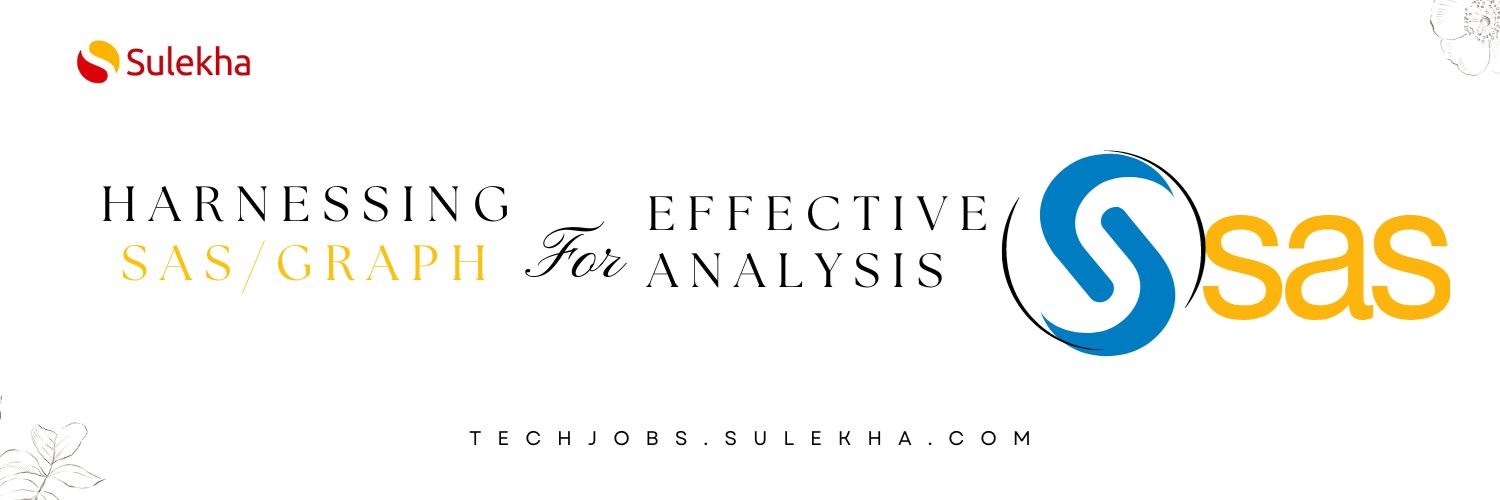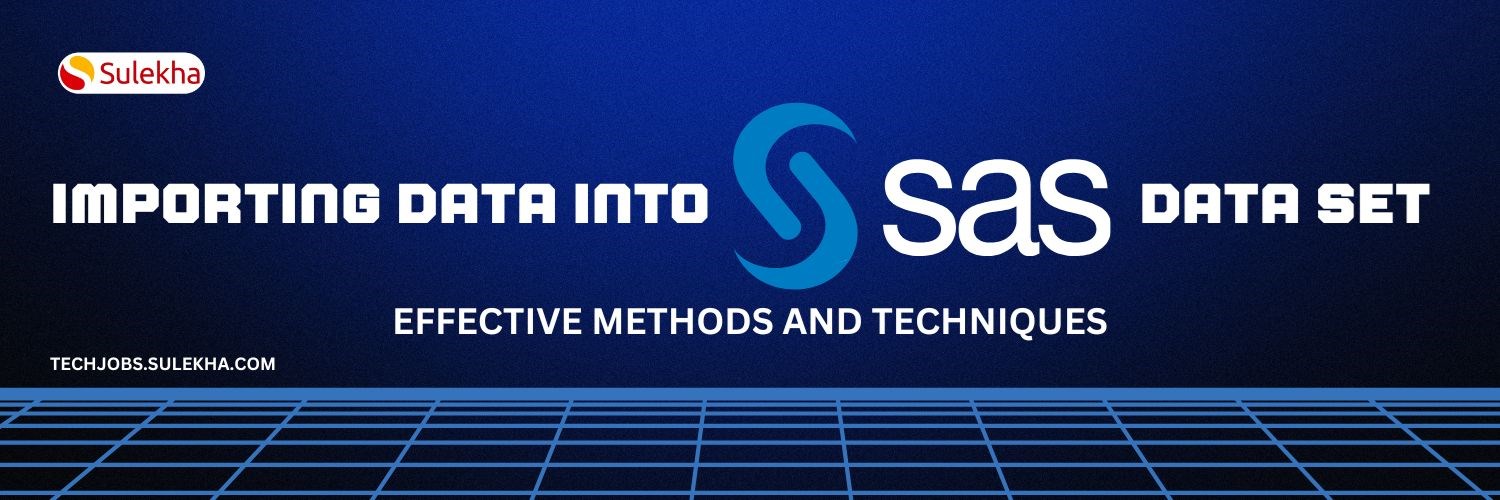
A SAS data library is a structured storage location within the SAS software environment where datasets are stored and organized. Each Library is assigned a unique name and can be associated with a directory on your file system or a database management system. SAS datasets, which contain structured data and metadata, are stored within these libraries.
SAS libraries are the gateway to access, manage, and analyze data using SAS procedures and programming. They can be permanent or temporary, providing flexibility in data storage and often integrating with external data sources, such as databases and spreadsheets. SAS data libraries support data security by allowing access controls and permissions, and they maintain essential metadata about the datasets they contain, including variable attributes and formats.
Now, we shall discuss the importance of the SAS data library in detail.
As discussed above, a SAS data library is a group of SAS files that SAS recognizes as a unit in your operating system. It is crucial to understand that libraries created by SAS during installation are known as a system defined - Work, Sashelp, Sasuser, etc. Moreover, we can also create the libraries per our requirement called User defined. All used defined libraries and any system defined Library other than WORK are permanent.
You can create libraries in two ways:
1. New library window Method
2. Libname statement
Rules for naming a libref:
· It must be eight characters or less
· Must begin with a letter or underscore
· The remaining characters are letters, numbers, or underscores.
We can create SAS libraries using a point-and-click interface:
Click View → Explorer. Click File → New (New Library Window Opens). Enter details for the new Library in the New Library window.
✓ Name: Name of the Library (Libref )
✓ Engine: Default for Independent Library
✓Click the Enable at Startup check box to have the Library created at the start of every SAS session.
✓ Use the browse button to enter the path of the external folder.
✓ Click OK.
We can even create SAS libraries using LIBNAME Statement
The LIBNAME statement creates the library reference, referred to as libref, and an alias for the SAS data library. A connection is established between a libref in SAS and the actual locations of files on your operating system when you complete the LIBNAME statement.
Libname Libref Engine' Path';
Creating a library by using libname statement: Libname YLP' E: \Clinitrial';
Where Libname → is the Keyword
YLP → Library Name (Libref)
E → is the Drive
Clinitrial → is the Folder Name.
Libraries created by libname cannot be enabled, but they are permanent.
WORK is the default library. If you do not include a library reference in the name of the SAS data set, SAS will assume that the libref is WORK. After a SAS session ends, a WORK library is deleted and is no longer accessible for new sessions. It is mentioned with the first qualifier, WORK, or by a one-level name. After a SAS session, a permanent library is never deleted; it remains open and accessible. It is referenced in a two-level name. The name of the first level should be something other than WORK.
Overall, SAS libraries play a crucial role in data management and analysis within the SAS environment. They provide a centralized location for storing and accessing datasets, making it easier for users to work with data and perform advanced analytics tasks. If you want to understand effective method and techniques of importing data into SAS data, you click on the link to learn.
Find a course provider to learn SAS
Java training | J2EE training | J2EE Jboss training | Apache JMeter trainingTake the next step towards your professional goals in SAS
Don't hesitate to talk with our course advisor right now
Receive a call
Contact NowMake a call
+1-732-338-7323Enroll for the next batch
SAS Certification Course
- Dec 8 2025
- Online
SAS Certification Course
- Dec 9 2025
- Online
SAS Certification Course
- Dec 10 2025
- Online
SAS Course Online Training
- Dec 11 2025
- Online
SAS Course Online Training
- Dec 12 2025
- Online
Related blogs on SAS to learn more

SAS Character Functions Demystified: A Comprehensive Guide
Master the power of SAS character functions and learn how to streamline your data processing tasks.

A Comprehensive Guide on Character Functions of SAS
Now we shall discuss a Comprehensive Guide on Character Functions of SAS in detail.

From Data to Graphs: Harnessing SAS/GRAPH for Effective Analysis
Learn how to effectively analyze and present your data with this comprehensive guide to SAS/GRAPH.

Importing Data into a SAS Data Set: Effective Methods and Techniques
we have discussed how to import data into SAS data set, best practices for data reading in SAS, and how to create a dataset

Comprehensive Guide to SAS Functions
Learn how to leverage SAS functions to streamline your data analysis and understand the features of SAS functions.

INTRODUCTION TO SAS
We have discussed What is SAS, variables in SAS, six attributes of SAS stores and many other unique concepts of SAS.

SAS to help British Forces to hunt down Nazi Criminals!
As the SAS empowers the professionals to accomplish various success, it has also revealed it’s to open the secrets and postwar exploits helping the government to hunt down the Nazi crime people.

SAS Factory Miner will take your business analysis to next level!
SAS gained significant reach across the globe by providing a reliable platform for advanced statistical analytics. As the more and more organizations grow their need to acquire analytical software, SAS skills

Welcome SAS Factory Miner which takes your business analysis to next level!
SAS gained significant reach across the globe by providing a reliable platform for advanced statistical analytics. As the more and more organizations grow their need to acquire analytical software, SAS

SAS unveils Viya, destined to be the foundation of future products
The ability to analyze, manage and modify data from multiple types of sources makes SAS an unique and popular data analytic software suite in the world. The software suite already become friendly with the non-technical users with its GUI (Graphical U
Latest blogs on technology to explore

From Student to AI Pro: What Does Prompt Engineering Entail and How Do You Start?
Explore the growing field of prompt engineering, a vital skill for AI enthusiasts. Learn how to craft optimized prompts for tools like ChatGPT and Gemini, and discover the career opportunities and skills needed to succeed in this fast-evolving indust

How Security Classification Guides Strengthen Data Protection in Modern Cybersecurity
A Security Classification Guide (SCG) defines data protection standards, ensuring sensitive information is handled securely across all levels. By outlining confidentiality, access controls, and declassification procedures, SCGs strengthen cybersecuri

Artificial Intelligence – A Growing Field of Study for Modern Learners
Artificial Intelligence is becoming a top study choice due to high job demand and future scope. This blog explains key subjects, career opportunities, and a simple AI study roadmap to help beginners start learning and build a strong career in the AI

Java in 2026: Why This ‘Old’ Language Is Still Your Golden Ticket to a Tech Career (And Where to Learn It!
Think Java is old news? Think again! 90% of Fortune 500 companies (yes, including Google, Amazon, and Netflix) run on Java (Oracle, 2025). From Android apps to banking systems, Java is the backbone of tech—and Sulekha IT Services is your fast track t

From Student to AI Pro: What Does Prompt Engineering Entail and How Do You Start?
Learn what prompt engineering is, why it matters, and how students and professionals can start mastering AI tools like ChatGPT, Gemini, and Copilot.

Cyber Security in 2025: The Golden Ticket to a Future-Proof Career
Cyber security jobs are growing 35% faster than any other tech field (U.S. Bureau of Labor Statistics, 2024)—and the average salary is $100,000+ per year! In a world where data breaches cost businesses $4.45 million on average (IBM, 2024), cyber secu

SAP SD in 2025: Your Ticket to a High-Flying IT Career
In the fast-paced world of IT and enterprise software, SAP SD (Sales and Distribution) is the secret sauce that keeps businesses running smoothly. Whether it’s managing customer orders, pricing, shipping, or billing, SAP SD is the backbone of sales o

SAP FICO in 2025: Salary, Jobs & How to Get Certified
AP FICO professionals earn $90,000–$130,000/year in the USA and Canada—and demand is skyrocketing! If you’re eyeing a future-proof IT career, SAP FICO (Financial Accounting & Controlling) is your golden ticket. But where do you start? Sulekha IT Serv

Train Like an AI Engineer: The Smartest Career Move You’ll Make This Year!
Why AI Engineering Is the Hottest Skillset Right Now From self-driving cars to chatbots that sound eerily human, Artificial Intelligence is no longer science fiction — it’s the backbone of modern tech. And guess what? Companies across the USA and Can

Confidence Intervals & Hypothesis Tests: The Data Science Path to Generalization
Learn how confidence intervals and hypothesis tests turn sample data into reliable population insights in data science. Understand CLT, p-values, and significance to generalize results, quantify uncertainty, and make evidence-based decisions.